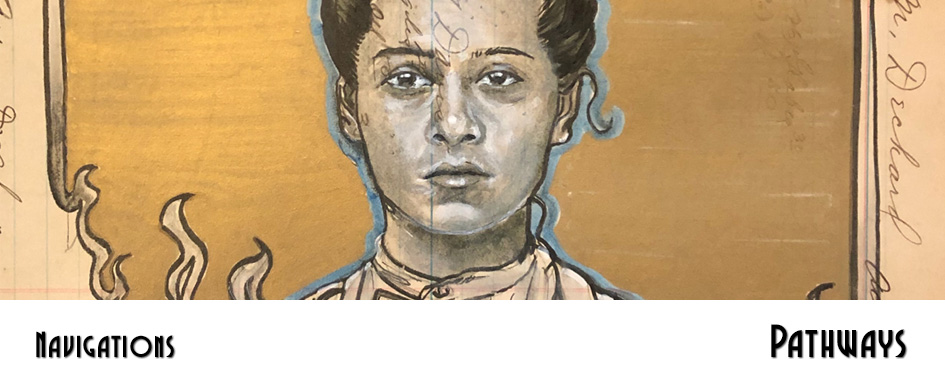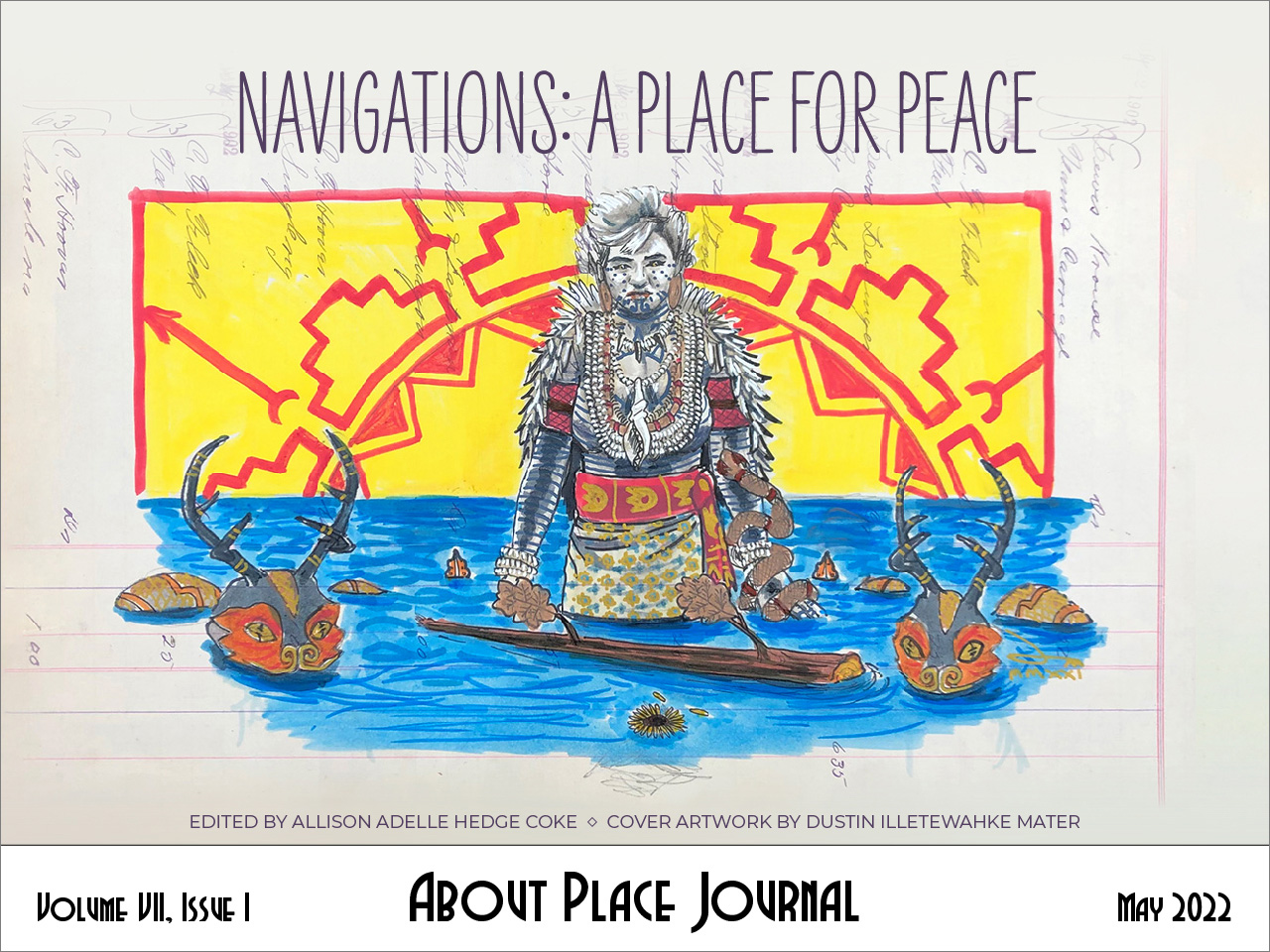This essay poses critical reflections on the occasion of Earth Day and the role of Ethnic and Indigenous Studies in articulating and enacting liberatory futures for all life. The piece was originally presented as a keynote address for “Restorative Justice, Community Healing, and Indigenous Truths: An Ethnic Studies Symposium” at the University of Colorado Denver on April 22, 2022.
While we witnessed the collective social reckoning throughout the past two years over state sanctioned anti-Black violence and relentless settler colonial extractivism on Indigenous lands amid the backdrop of a global pandemic, the relevance and urgency of Ethnic Studies continued to reverberate in critical juxtaposition. That we have come to this moment of celebrating our field in conjunction with a celebration of the earth is no small detail.
In my Cherokee language, Elohi (Earth) is our nurturer, the one upon whom we all rely and who gives us life and so many gifts. We must never lose sight of this simple, yet profound, underlying fact—that we are all connected through our reliance upon the gifts of the earth and the elements that constitute our collective sustenance and beingness: soil, air, water, and fire. The latter of these is represented principally by the sun but is also present in each one of us as human beings in the warmth of our bodies—our spirits.[1]
I emphasize these original, elemental threads of our human existence as a way of reclaiming the occasion of Earth Day—a day that can convey different meanings depending on where you’re coming from.
Earth Day began in 1970 during a critical and defining time for both the mainstream US environmental movement and for our community struggles that led to the development of our field and its pillar disciplines of Asian American Studies, Chicanx Studies, Africana Studies, and Native American and Indigenous Studies. The organization of the first Earth Day was spurred by numerous cumulative concerns about the damage that industrial and extractive activities were doing to the vital systems of our planet.
That this movement came out of anti-war and anti-imperialist activism in the heart of the empire known as the United States is significant. But equally significant is how the movement struggled to enlist the support and solidarity of BIPOC activists and communities, a fact that reflects our tensions with mainstream and whitewashed US environmentalism today.
Of course, we need to underscore the contributions of individuals like Arturo Sandoval, a Chicano activist from New Mexico who was invited to help plan the inaugural Earth Day. As the only person of color in this space, Sandoval saw the glaring holes in the fabric of the environmental movement and sought to address them in meaningful and lasting ways. His continued work through the Center of Southwest Culture is a testament to his dedication to this cause.
A decade later, the environmental justice movement gained momentum, galvanized by the foundational work of Dr. Robert Bullard, although it still encountered considerable obstacles along the same lines that Sandoval experienced—the deafening silence in mainstream circles around environmental racism and the resulting perception from communities of color that environmentalism as it was originally cast was not a worthwhile arena for addressing their immediate and pressing concerns.
Nevertheless, the countless scholars and activists who have contributed to this ongoing movement for environmental justice made significant headway in amplifying the concerns and voices of communities of color around the environmental injustices they experience. The movement has continued to evolve to meet new challenges and visions, as articulated by calls for climate justice and a just energy transition.
And so, while mainstream environmentalism still largely centers the voices of affluent white people, our communities continue to fight for visions of sustainability that center social justice and the dismantling of the oppressive and extractive systems and mindsets that have gotten us here in the first place.
And this is where we rise as central players in the climate crisis. As Ethnic Studies scholars, we know the roots of the tensions between our respective communities and the mainstream US environmental movement. They reside in ignorance and complacency at best, and at worst active perpetuation of white supremacy, settler colonialism, and cis-heteropatriarchy, which continue to undergird and characterize the project that is the United States of America.
The histories, knowledges, languages, and critical intellectual tools that arise from our communities provide the keys for understanding and addressing the most pressing problems of our time. What’s more, and what uniquely positions the field, is that we are thinking and acting together and in solidarity. The project of Critical Ethnic Studies enacts a radically relational framework through which the ethics and relationships that connect us and that we hold dear can guide us all out of this mess.
I use the term relationality as a way of thinking about (a) systems, structures, practices, and peoples that exist in relation to one another (as articulated by “power relations” and “social relations”), as well as (b) kinship and what it means to be a good relative—and this extends to the land, waterways, and more-than-human beings via Indigenous ontological and philosophical stances and their manifest land-based knowledges and practices.
By radical relationality, I am focusing more on the latter meaning. As Indigenous feminist scholars Cutcha Risling Baldy and Melanie Yazzie write, “radical relationality is … simply the ontology of being-in-relation-to that describes all life and futurity; keeping ourselves open to the possibility of making new relatives is one of the essential functions of life and, indeed, decolonization.”[2] To Baldy and Yazzie, radical relationality articulates an Indigenous feminist framework of care and kinship among all beings and guides a collective vision of counterhegemonic and decolonial Indigenous resistance.
In my recent work, I’m intentionally couching such relational ontologies and practices within the discourse of technology.[3] Through another act of reclamation, I’m proposing we redefine technology to reflect the simultaneously timeless and innovative ethos of relationality that offers a critical counterbalance to the current preoccupation with Western scientific technological approaches to the so-called climate crisis. In referring to our present circumstances as the “so-called” climate crisis, I’m taking a cue from Potawatomie climate justice scholar Kyle Whyte, who purports that instead of a climate crisis, we are in fact experiencing a relational crisis throughout the world today.
The severing of reciprocal and respectful relationships among and between human beings and the earth is a direct result of an ethos of domination and control—a virus that has spread throughout the world and manifests today in manifold systems, structures, and practices of racial capitalism, extractivism, colonialism, militarization, incarceration, heteronormativity, anti-Blackness, xenophobia, and numerous other ongoing and compounding acts of dispossession, destruction, exploitation, and marginalization.
While narratives of Western science and technology have taken center stage as we confront the urgency and severity of climate change, solutions to the root problems lie in the ability of humans to shift our ethics in relation to the earth and other-than-human beings, as well as to each other. This shift will require us to draw on our frameworks and practices of relationality as subversive technologies. It pushes us to reconsider not only how we view the role of technology, but how we understand that which constitutes technology itself. Relational technologies can work to counteract dominant technocratic narratives of control over and management of the earth, and instead to reinforce our roles and responsibilities as kin.
To help anchor this, I’ll share a story. In the Cherokee oral tradition, the story of the Origin of Disease and Medicine recounts how, long ago, the animal nations decided to take revenge on the human beings, who had been killing them indiscriminately and without the proper acknowledgement of gratitude for their gifts of life. In retaliation, the animals created diseases to inflict on the human beings—for example, the spirit of Little Deer is said to cause rheumatism in hunters who take a deer without giving thanks. Ultimately, despite the disrespectful behavior of the human beings, the plants took pity on them and offered themselves as the many medicines Cherokees know today.
This story teaches not only the obligation of Cherokee people to respect our animal relatives (both by learning from past mistakes and in understanding the power that other-than-humans can wield), but also that we owe a debt of gratitude to the plants for coming to the people’s aid when they needed them most. The story reminds us what it means to be a human being, what it means to be in reciprocal relation to all of creation, and what the consequences are for when we stop acting as if we have any relatives at all. It’s also a story of redemption; of the unfailing love that the earth shows for us and, in turn, our responsibilities to respect, caretake, and express gratitude for all life.
How might we draw from these teachings to reframe our understandings of living in good relation with the earth? This could include everyday acts of relationality that push us to think beyond individualistic deeds of benevolent complacency, like recycling or monitoring our carbon footprints (note: I am an avid recycler). Such everyday acts of relationality could help us redefine what it means to be an “environmentalist” and could include donating to or volunteering for local BIPOC community organizations or learning an Indigenous language. Contributing to #LandBack for Indigenous peoples and supporting efforts like Frontline Farming’s Liberation by Land campaign are other ways to reconfigure environmentalism in ways that center social justice and decolonization.
Lately, I’ve been hearing and reading a lot about demographic shifts; that, for the second time in the history of these lands we collectively call Turtle Island, by the year 2045 the majority population will be non-white. But as intriguing as this fact may be, we know that white supremacy is not solely dependent upon numbers—that white majority is vastly different from white supremacy. We know, as with settler colonialism, that these are structures. They’re systemic. They don’t disappear with demographic shifts or with people of color in the seats of power.
This is why the long critical traditions of Ethnic Studies are needed now more than ever and that the continuation and amplification of our work should inform this horizon of demographic change. What are the future worlds that we will create? How do these worlds stand in radical solidarity and relationality to one another and maintain an allegiance not to a white supremacist cis-heteropatriarchal settler state, but to the earth?
We need to continue to view our struggles as land-based; connected by and through the land and on behalf of the land—as Arturo Sandoval observed in 1970 in his decision to help plan the first Earth Day celebration, and as countless water and land defenders have expressed in their fights against the continued assault of the earth and our more-than-human relatives, from Standing Rock to Wet’suwet’en, from Mauna Kea to the movement to Stop Line 3.
Sustainable futures are relational at their core, and Ethnic Studies is the disciplinary home of technologies that can help build such futures. These subversive technologies reside in our histories, our radical visions, our cultures, knowledges, refusals, resistances, and ontologies of care. They’re born out of our unique ability to struggle with beauty and love and grace and dignity—and to never stop.
[1] I acknowledge my Cherokee elders who have imparted this teaching to me, although it’s important to note that its relevance is universal.
[2] Yazzie, Melanie K, and Cutcha Risling Baldy. 2018. “Introduction: Indigenous Peoples and the Politics of Water.” Decolonization: Indigeneity, Education & Society 7 (1): 1–18.
[3] Carroll, Clint. 2021. “Fauna and Flux on the Plains’ Edge: Animal Kinship, Place Making, and Cherokee Relational Continuity.” In The Greater Plains: Rethinking a Region’s Environmental Histories, edited by Brian Frehner, and Kathleen A. Brosnan, 114–37. Lincoln: University of Nebraska Press.


